11 years since Camp Speicher massacre: The Daesh atrocity that ignited Iraqi resistance
By Ivan Kesic
It’s been 11 years since Daesh takfiri terrorists unleashed a chilling nightmare near Tikrit Air Academy (formerly Camp Speicher) in northern Iraq, brutally executing over 1,700 young Iraqi Shi’a Air Force cadets.
This harrowing massacre of defenseless Iraqi cadets at the Salah al-Din military base stands as one of the darkest and most savage chapters in the takfiri terrorist group’s reign of terror.
The grainy footage that circulated on social media after the incident captured the heart-wrenching scenes of cadets being hauled off trucks and mercilessly executed along the banks of the Tigris River.
The following year, the discovery of mass graves in Tikrit, holding the remains of nearly 1,700 victims, sent waves of shock and indignation reverberating around the globe.
The carnage became a rallying cry against the terrorist group in Iraq, igniting the spirit of youth and paving the way for widespread resistance against Daesh, also made possible by a fatwa (religious decree) issued by Grand Ayatollah Sistani, the nation’s highest religious authority.
On June 12, 2014, Daesh terrorists killed around 1,700 Iraqi air force cadets after kidnapping them from Camp Speicher, a former US base.
— Press TV 🔻 (@PressTV) June 12, 2023
Former US President Donald Trump has admitted the terror group was founded by the US. pic.twitter.com/knZdmn8J6v
What happened on that fateful day?
On June 12-13, thousands of unarmed cadets trained at Camp Speicher, a military installation in Salah al-Din Governorate, north of Baghdad.
Upon hearing that Tikrit had fallen to Daesh terrorists, roughly 3,000 cadets were ordered to change into civilian clothes and leave for a 15-day break, in order to ensure their safety.
Survivors later recounted that the cadets believed they had a safe passage south to Baghdad, protected by pro-government tribes.
Instead, they were intercepted by Daesh terrorist patrols and allied armed tribal groups.
Following their capture, Daesh separated Sunni from Shi’a and non-Muslim prisoners, executing them in a brutally systematic fashion as eyewitnesses later described.
Some victims’ bodies were dumped into mass graves, others thrown into the Tigris River.
Iraq declares end of Daesh ‘caliphate’ after capture of historic Mosul mosque pic.twitter.com/WHF7FNlXkP
— Press TV 🔻 (@PressTV) June 29, 2017
How did the massacre unfold?
Local tribal leaders, many connected to the former Ba'athist regime, handed over Shi’a and non-Muslim captives to Daesh terrorists as retribution for former Iraqi dictator Saddam Hussein’s downfall, while Sunni prisoners were released on the condition they repented.
Most of the captured cadets were teenagers taken to multiple locations around Tikrit, including Saddam’s former presidential palace.
Between June 12 and 13, eyewitnesses reported executions carried out individually, by shooting, beheading, and burying victims alive – the most heinous crimes.
Eyewitnesses described the Tigris River running red with the blood of the victims.
Daesh brazenly publicized the massacre, posting graphic photos online, which sparked anger and outrage across the world against the group and its Western backers.
Images showed handcuffed cadets forced into humiliating positions, alongside bloodied corpses and firing squads draped with Daesh flags preparing mass executions.
Iraqi authorities have arrested a suspect in the June 2014 massacre by Daesh Takfiri terrorists at an air force camp in the country’s north-central province of Salahuddin. https://t.co/YnMWTbUXYe pic.twitter.com/DpUgNxpJZq
— Press TV 🔻 (@PressTV) July 27, 2023
How did the West respond to it?
The initial Western media and human rights response was alarmingly dismissive, as though the Iraqi lives didn’t matter to them or that the perpetrator was their ally.
Despite evidence and Iraqi government confirmations, human rights watchdogs questioned the authenticity of the images. Erin Evers, a researcher with a history of anti-Shi’a bias, expressed skepticism in an interview with The New York Times shortly after the massacre.
The Times’ Elizabeth Orcutt also cast doubt on the images, an analysis echoed by many Western media sources, which described the massacre as alleged or unverified for weeks.
The US military, which was preparing to retake Tikrit and had aerial surveillance nearby, did not confirm the massacre sooner as it wanted to provide cover to the allied terrorist group.
The US created Daesh terror group and killed the commander who defeated Daesh in #Iraq and #Syria. (Part 2/2)#Soleimani#DecisiveResponse #Iran#SoleimaniAssassination pic.twitter.com/UtgpxoTAat
— Press TV 🔻 (@PressTV) January 5, 2020
What happened in its aftermath?
The gruesome massacre – the worst in the modern history of Iraq – exposed the weaknesses of the Iraqi army and raised legitimate questions about US complicity in it.
On June 13, 2014, Grand Ayatollah Sistani issued a fatwa from Najaf urging Iraqis to resist Daesh with all their might.
Two days later, the Iraqi government established the Popular Mobilization Units (PMU), combining seven Shia resistance groups with thousands of Sunni, Christian, and other volunteers.
With Iranian support, this anti-Daesh coalition was instrumental in defeating Daesh and liberating Iraqi territory, led by Iran’s anti-terror commander General Qassem Soleimani and PMU deputy leader Abu Mahdi al-Muhandis.
Both of them were later assassinated in Baghdad on the direct orders of Donald Trump, yet again proving how Americans see anti-terror figures.
After retaking Tikrit in April 2015, Iraqi authorities uncovered mass graves containing the remains of the murdered cadets.
Iraqi courts have since sentenced more than a hundred individuals for their role in the massacre, with many executions carried out to date.
Iran appoints new central bank governor after currency fluctuations
General Ahmad Vahidi appointed deputy commander of IRGC
Iran MPs hail triple satellite launch as major milestone in space program
VIDEO | Bangladesh holds a solemn funeral for former Prime Minister Khaleda Zia
Historic Indian city of Lucknow in a state of disrepair
'Mythomania': Iran calls out CNN for amplifying Netanyahu's lies on its nuclear program
Israeli paper reveals high cost of new laser air defense system
IRGC intelligence forces disband terrorist cell in southeast Iran


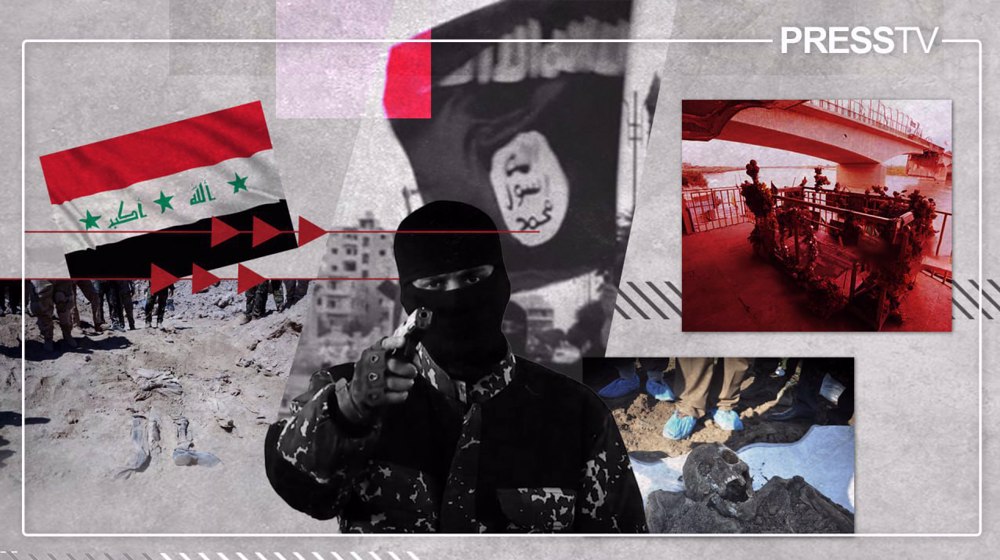
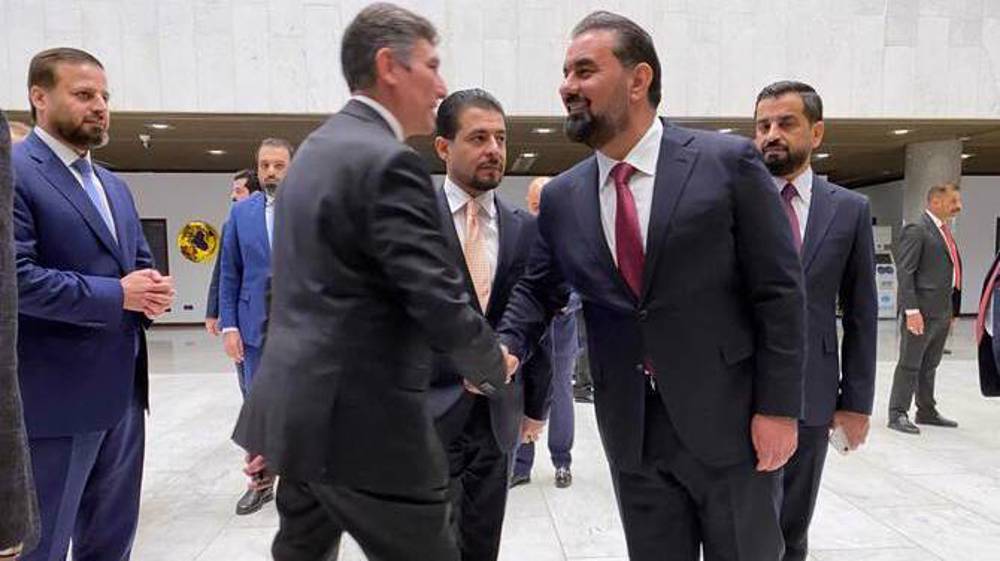
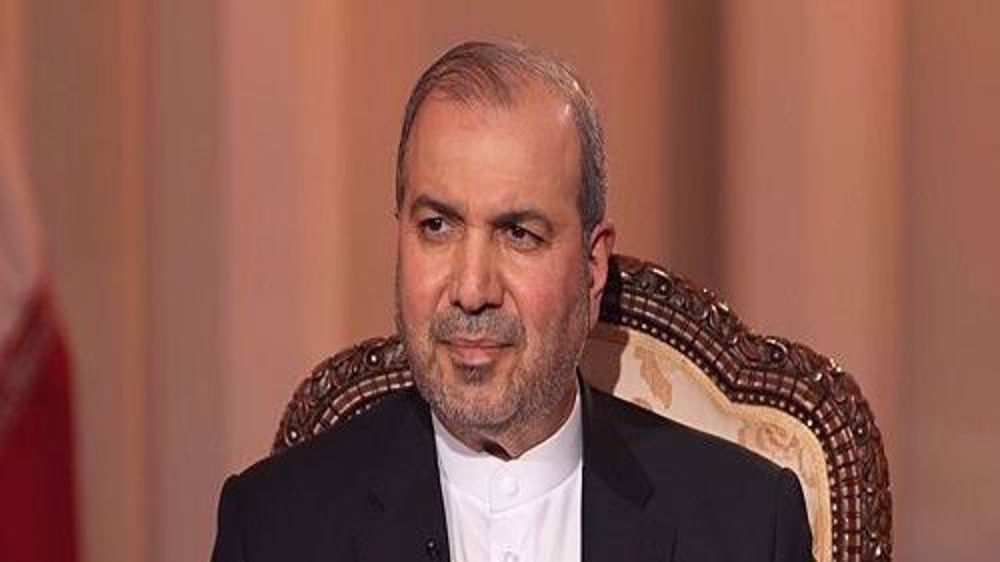
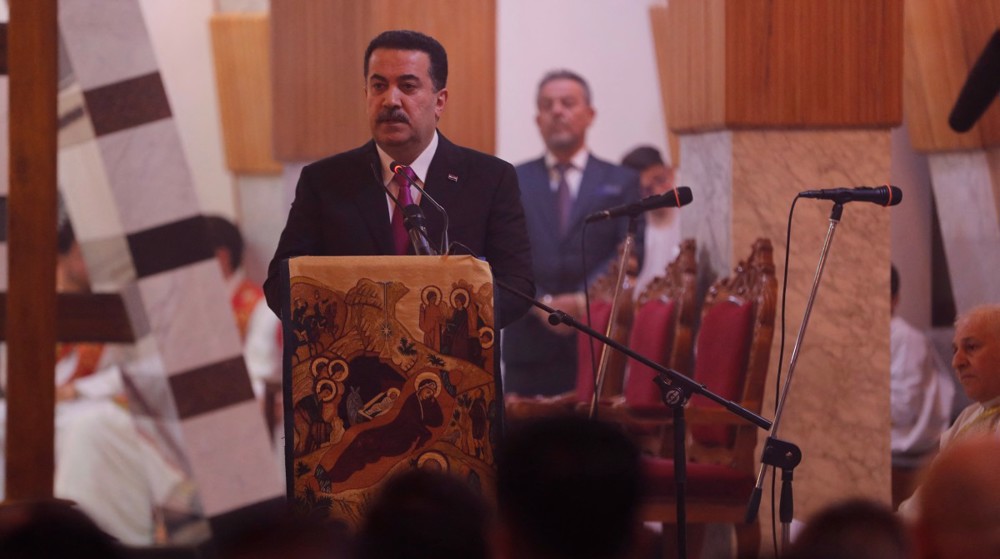




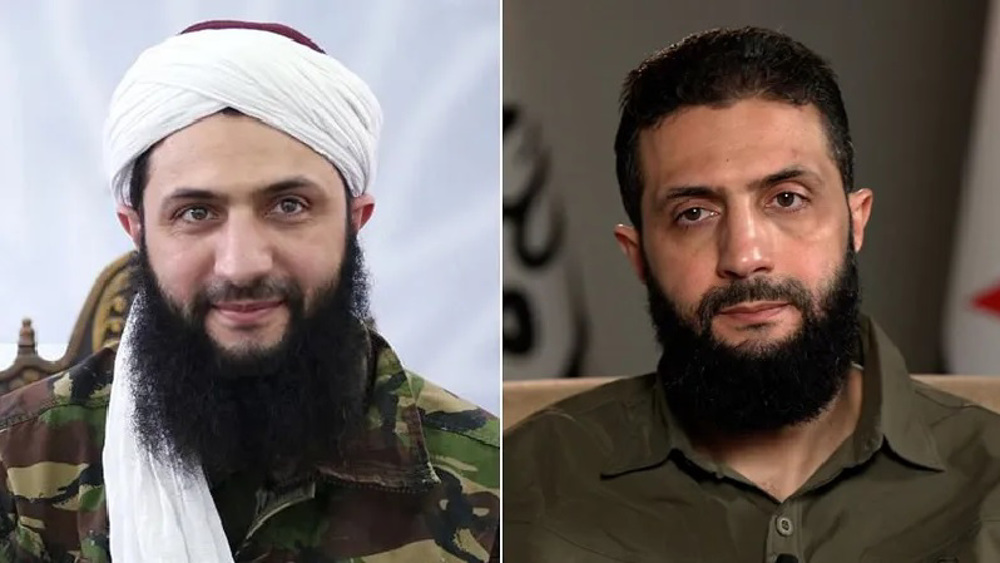
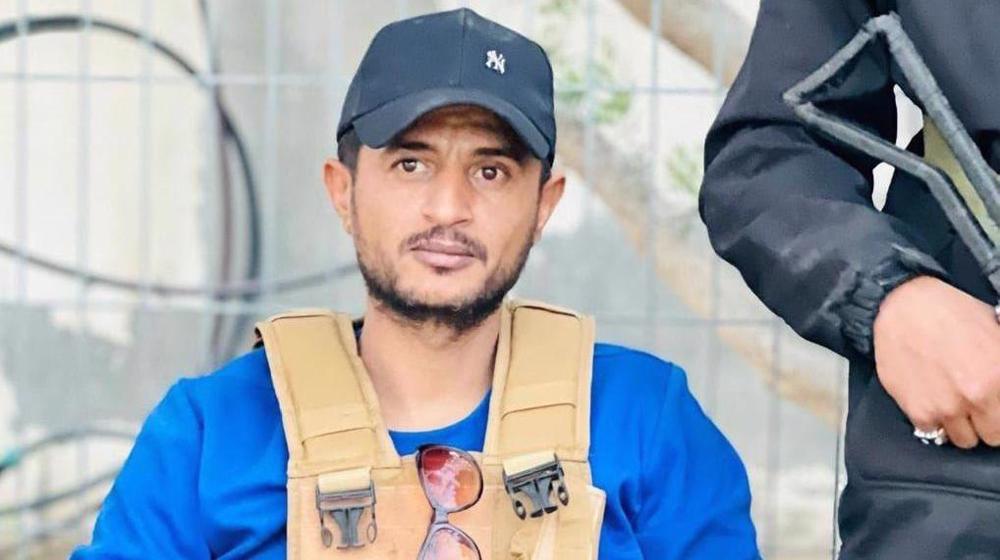
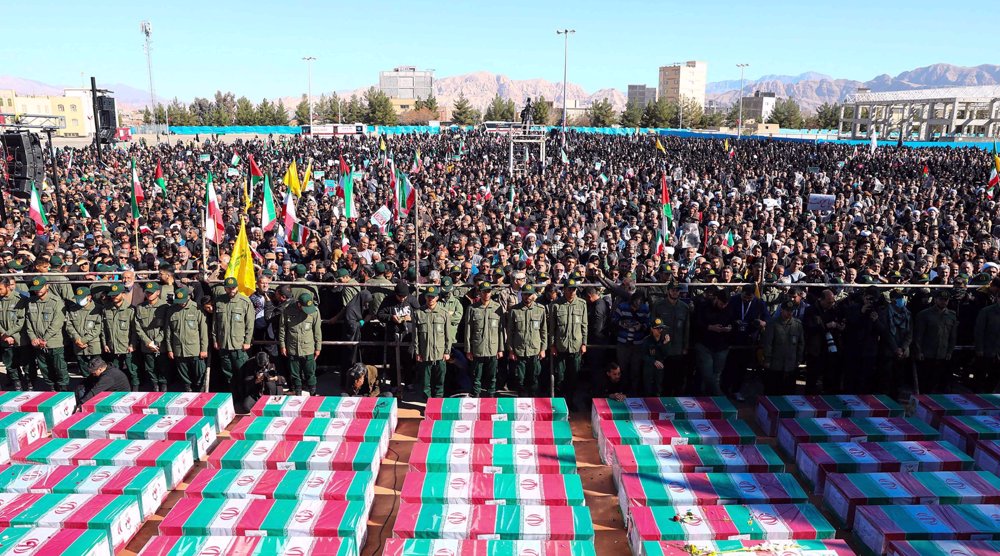
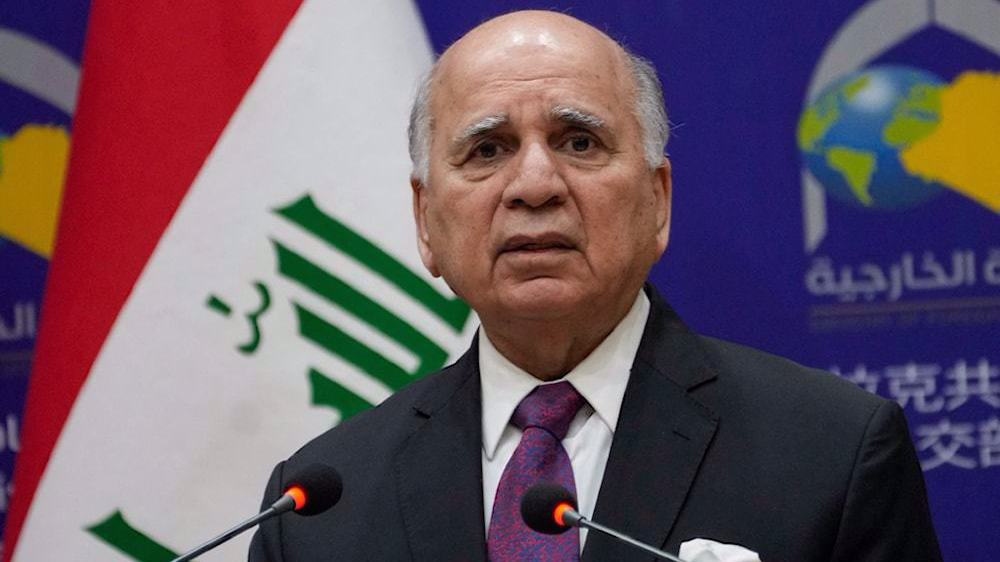

 This makes it easy to access the Press TV website
This makes it easy to access the Press TV website